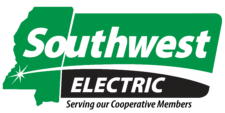If you get your electricity from a local cooperative, you are a member-owner. That means you are entitled to certain benefits, including the allocation of capital credits. This information is provided to help you better understand capital credits, how they work, and what it means to each cooperative member. Not-for-profit cooperatives provide electricity to members — but unlike other utilities and power companies, making a profit is not the goal of a cooperative. Instead, our business is conducted on an at-cost basis for the benefit of our members and any margins (revenue minus operating costs and expenses) are distributed or allocated back to members as capital credits.
Capital credits are not the only member benefits:
Reliable electric service at cost
Local control of your cooperative, governed by a board of directors, also member-owners, who live and work in your area
The right to participate through voting memberships
Questions & Answers
Q. What are capital credits?
A. If the cooperative has margins in excess of operating costs and expenses, those funds are credited back to a member’s capital account based on their patronage. The amounts credited to each member’s account are called capital credits.
Q. How do members earn capital credits?
A. When you signed up for electrical service from the cooperative, you became a member. Each member is allocated capital credits based on how much energy the member uses from the cooperative. The more energy a member purchases, the greater the amount of capital credit allocated to the member’s account.
Q. How are capital credits handled by the cooperative?
A. Each member’s capital credits account is maintained and kept on record by the cooperative. As financial conditions permit, the cooperative will “retire” or designate amounts of capital credits back to the member. How often credits
are returned varies because it is essential to have a sufficient amount of member equity available. Cooperatives are affected by economic conditions, weather events, borrowing options, infrastructure improvement needs and other factors. However, as a member-oriented organization, the cooperative board of directors will determine when to retire/return capital credits to members.
Q. Are capital credits returned every year?
A. Each year the board of directors will decide whether to retire capital credits. There may be years when the cooperative is not able to distribute capital credits because of certain economic conditions and other factors such as major storm damage.
Q. How much capital credits money is returned by cooperatives?
A. This varies according to each cooperative. Collectively, the 11 member system of Cooperative Energy has retired $412 million in capital credits back to members.
Q. How long must an electric customer be a member to accumulate credits?
A. This differs by Cooperative, but on average members receive a capital credit payment after about six years of membership.
Q. How are capital credits returned?
A. Either by a check mailed to members, or in the form of a credit on the electric bill.
Q. What happens to a member’s capital credits if the member moves away?
A. Capital credits are maintained on record and can still be returned to a member when those credits are retired by the local board of directors. Members who move away should advise the cooperative of their new mailing address so those credit payments can be returned.
Q. Can family members cash a deceased member’s capital credits check? A. Yes. Surviving family
A. Yes. Surviving family members may present a deceased member’s check for validation and payment at the local cooperative office.
